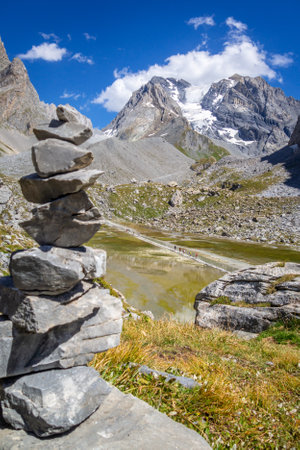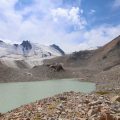1. Preparing for High Elevation Camping
Key Considerations Before You Go
Summer mountain camping in the U.S. is an amazing adventure, but high elevation comes with its own set of challenges. Preparation is key to making your trip safe and enjoyable. Here are the main factors to keep in mind:
- Acclimatization: Your body needs time to adjust to higher altitudes where the air has less oxygen. Plan to spend a day or two at mid-elevation if you’re coming from sea level before heading higher.
- Weather Awareness: Mountain weather can change fast, even in summer. Afternoon thunderstorms, temperature drops, and strong winds are all common. Always check the local forecast and be ready for sudden changes.
- Safety Essentials: Being prepared with the right gear is crucial. Don’t assume summer means warm days and nights at high altitude—temperatures can drop below freezing after dark.
Essential Gear Checklist for Summer Mountain Camping
| Category | Recommended Gear | Why Its Important |
|---|---|---|
| Tent & Shelter | Four-season tent or sturdy three-season tent, ground tarp | Protection from wind, rain, and unexpected cold snaps |
| Sleeping System | 20-30°F sleeping bag, insulated sleeping pad | Keeps you warm during chilly mountain nights |
| Clothing | Base layers, fleece jacket, waterproof shell, hat & gloves | Layering helps manage changing temps; even in summer, frost can happen above tree line |
| Hydration & Nutrition | Water filter/purifier, electrolyte tablets, high-calorie snacks | Staying hydrated is tougher at altitude; energy needs increase with exertion and cold |
| Navigation & Safety | Map & compass (or GPS), headlamp, first aid kit, whistle | Mistakes are costlier far from help; always know your route and be able to signal for rescue |
| Sun Protection | Sunscreen (SPF 30+), sunglasses with UV protection, brimmed hat | The sun’s rays are stronger at high elevation—even on cloudy days! |
Tips for Acclimatizing and Staying Safe at Altitude
- Pace Yourself: Take it easy on arrival; avoid strenuous hikes on day one.
- Stay Hydrated: Drink more water than usual—aim for at least 3-4 liters per day.
- Avoid Alcohol: It dehydrates you faster at altitude and can worsen symptoms of altitude sickness.
- Know the Signs of Altitude Sickness: Headache, nausea, dizziness, and trouble sleeping are early warnings. If symptoms don’t improve with rest and hydration—or get worse—descend to a lower elevation.
Packing Pro Tips for U.S. Summer Mountain Camping
- Ditch Cotton: Stick to synthetic or wool layers—they dry quickly and keep you warm when wet.
- Coffee Lovers: Bring instant coffee packets or a small French press—the crisp mountain mornings call for a hot cup!
- Bears & Critters: In many areas (like Colorado Rockies or the Sierra Nevada), pack a bear canister or hang your food away from camp overnight.
Your Adventure Starts With Preparation!
The right planning and gear set you up for an unforgettable experience among America’s stunning peaks this summer. Stay tuned for trail recommendations and more expert tips in the next sections!
2. Staying Safe: Health and Weather Precautions
How to Handle Altitude Sickness
Camping at high elevations in the American mountains means thinner air and lower oxygen levels. This can cause altitude sickness, even for experienced hikers. Symptoms include headaches, nausea, dizziness, and shortness of breath. Here’s what you can do:
| Tip | Description |
|---|---|
| Ascend Gradually | Take your time going up. If possible, spend a night or two at mid-elevation before reaching your final campsite. |
| Stay Hydrated | Drink lots of water, but avoid too much caffeine or alcohol, which can dehydrate you faster. |
| Eat Light Meals | Stick to easy-to-digest foods and eat smaller portions more often. |
| Rest Often | If you feel tired or dizzy, stop and rest. Don’t push yourself too hard. |
| Recognize Serious Symptoms | If you develop severe headaches, vomiting, or trouble walking, descend right away and seek medical help. |
Protecting Yourself from UV Exposure
High elevation means stronger sun. The air is thinner and there’s less protection from UV rays, so it’s easier to get sunburned even on cool or cloudy days. Follow these tips:
- Wear sunscreen: Use broad-spectrum SPF 30 or higher, and reapply every two hours.
- Sunglasses: Protect your eyes with sunglasses that block UVA and UVB rays.
- Cover up: Lightweight long-sleeve shirts, pants, and a wide-brimmed hat help shield your skin from the sun.
- Lip balm with SPF: Don’t forget your lips—they burn easily at high altitudes!
Coping with Sudden Weather Changes
Mountain weather in the U.S. can shift quickly—clear skies can turn into thunderstorms in minutes. Stay safe by being prepared:
- Check forecasts: Always check the weather before your trip and each morning while camping.
- Packing layers: Bring moisture-wicking base layers, an insulating layer (like fleece), and a waterproof jacket.
- Shelter options: Have a sturdy tent or know where to find natural shelter if storms roll in fast.
- Avoid exposed areas: If you hear thunder or see lightning, move away from open ridges or tall trees as soon as possible.
Understanding Forest Fire Risks
Drier conditions in many American mountain regions mean higher risk of wildfires during summer. Know how to camp responsibly:
| Precaution | Description |
|---|---|
| No open flames during bans | If there’s a fire ban, don’t use campfires or charcoal grills—use a gas stove instead. |
| Select safe campsites | Avoid pitching tents near dead trees or brushy areas that could catch fire easily. |
| Dispose of ashes properly | If fires are allowed, make sure ashes are cold before leaving them behind—never leave a fire unattended! |
| Stay informed on alerts | Check local fire danger ratings and park alerts before heading out. |
Quick Reference Guide for Summer Mountain Camping Safety
| Issue | Main Tips |
|---|---|
| Altitude Sickness | Ascend slowly, hydrate well, rest often, watch for warning signs. |
| UV Exposure | Sunscreen, cover up, wear sunglasses and SPF lip balm. |
| Weather Changes | Packing layers, check forecasts daily, avoid exposed spots in storms. |
| Fire Risk | No open flames during bans, select safe sites, dispose of ashes safely. |
The key to staying safe during summer mountain camping in America is preparation—know the risks before you go and always have backup plans for changing conditions!

3. Choosing the Right Campsite
Tips for Selecting a Legal and Optimal Mountain Campsite
When planning your summer mountain camping adventure, picking the right campsite is key to a safe and enjoyable experience. Here are some practical tips to help you choose a spot that’s both legal and comfortable:
Check Regulations and Permits
- Know the Rules: Always check if you need permits or reservations before heading out. Popular mountain areas like Rocky Mountain National Park or the Sierra Nevada often require them.
- Designated Sites: Use established campsites when available—they help protect fragile alpine environments and are often safer.
Follow Leave No Trace Principles
Respecting nature is a big deal in the U.S. outdoor community. The Leave No Trace (LNT) principles help keep wild places pristine for everyone.
| LNT Principle | How to Apply at Your Campsite |
|---|---|
| Plan Ahead & Prepare | Research area rules, weather, and pack essentials. |
| Travel & Camp on Durable Surfaces | Set up camp on bare soil, rock, or existing pads—avoid fragile vegetation. |
| Dispose of Waste Properly | Pack out all trash, including food scraps; use established toilets or dig a cat hole 6-8” deep at least 200 feet from water sources. |
| Leave What You Find | Don’t pick flowers or remove natural objects; leave things as you found them. |
| Minimize Campfire Impact | If fires are allowed, use existing rings and only dead, downed wood—or better yet, use a camp stove. |
| Respect Wildlife | Observe animals from a distance; never feed them. |
| Be Considerate of Others | Keep noise down and give fellow campers space. |
Bear Safety: Store Food Properly!
Bears are common in many U.S. mountain regions. To keep both yourself and wildlife safe, follow these guidelines:
- Food Storage: Use bear canisters or food lockers where provided. In some places, hanging food isn’t enough—check local recommendations.
- Campsite Setup: Set up your tent at least 200 feet away from where you cook or store food.
- No Snacks in Tents: Never bring food, scented toiletries, or trash into your sleeping area.
Selecting a Water Source
- Proximity: Choose a site within easy walking distance (about 200 feet) from lakes, streams, or rivers—but not too close to avoid contaminating water sources.
- Treatment: Always filter or treat water from natural sources to avoid getting sick from bacteria or parasites.
- Avoid Flood Zones: Don’t camp in low spots near streams; sudden storms can cause flash flooding even in summer.
Quick Checklist for Choosing Your Campsite
- Avoid fragile alpine meadows; choose durable surfaces like gravel or rock slabs when possible.
- Pitched on level ground—check for rocks, roots, and overhead hazards like dead branches (“widowmakers”).
- Sheltered from strong winds but not directly under large trees in stormy weather.
- Away from trails and other groups for privacy and reduced impact.
- Packed up before leaving—no trace left behind!
4. Cooking and Food Storage at High Elevation
Preparing Meals in the Mountains
Cooking at high elevation during summer camping is a unique experience. The air is thinner, which means water boils at a lower temperature and food may take longer to cook. Here are some quick tips for successful meal prep:
- Plan Simple Meals: Choose recipes with fewer ingredients and shorter cooking times.
- Adjust Cooking Times: Expect everything—rice, pasta, even coffee—to take longer than usual. Check food for doneness before eating.
- Bring Extra Fuel: You’ll use more fuel at higher elevations, so pack extra canisters or wood if using a camp stove or fire.
- Use Wind Protection: Bring a windscreen for your stove to keep the flame steady.
Managing Food Storage
Proper food storage is key to keeping wildlife away and ensuring your safety in the mountains. Here’s a quick guide on how to handle your food:
| Storage Method | Best For | How To Use |
|---|---|---|
| Bear Canister | Bears, rodents, all US mountain areas | Store all scented items inside; place canister 100 ft from camp, away from trails and water sources. |
| Bear Hang (using rope & dry bag) | If canisters arent required or available | Suspend bag 10-15 ft above ground and 4 ft from tree trunk/branch. |
| Food Lockers (if provided) | Campsites with built-in lockers | Always use these if available; never leave food in your tent or vehicle overnight. |
Bearing Down: Bear-Proofing Your Camp Kitchen
Bears and other critters have an amazing sense of smell. Always follow these bear-proofing basics:
- No Food in Tents: Never bring snacks or scented items into your sleeping area—even toothpaste counts!
- Clean Up Completely: Wash dishes immediately, pack out all trash, and check for dropped crumbs around camp.
- Scented Products Count: Store toiletries, sunscreen, bug spray, and even wrappers with your food.
- Campsite Selection: Set up your cooking area at least 100 feet from your tent site.
- Bears Are Everywhere: Even in areas where you don’t expect them—always be cautious and prepared.
Troubleshooting Common Issues at High Elevation
- If your stove won’t light easily, warm the fuel canister in your hands for a few minutes first.
- If it’s windy, cook behind large rocks or use a designated fire ring for extra protection.
- If you’re unsure about local regulations (bear canister required? fires allowed?), check with the nearest ranger station before heading out.
5. Top Trail Recommendations for Summer Mountain Camping
When it comes to mountain camping in the summer, picking the right trail can make all the difference. High-elevation trails offer cooler temperatures, stunning views, and an escape from the crowds. Here are some of the best high-elevation trails across popular American mountain regions that every camper should consider.
Rocky Mountains
| Trail Name | Location | Elevation Gain | Highlight Features |
|---|---|---|---|
| Sky Pond via Glacier Gorge Trail | Rocky Mountain National Park, CO | 1,780 ft | Alpine lakes, waterfalls, panoramic mountain views |
| Boulder Lake Trail | Bridger-Teton National Forest, WY | 1,200 ft | Lush meadows, wildflowers, peaceful lakeside camping spots |
| Piney River Falls Trail | Eagles Nest Wilderness, CO | 850 ft | Waterfalls, wildflowers, aspen groves |
Sierra Nevada
| Trail Name | Location | Elevation Gain | Highlight Features |
|---|---|---|---|
| John Muir Trail (Section Hikes) | Sierra Nevada, CA | Varies (up to 6,000+ ft) | Sweeping granite peaks, alpine lakes, classic Sierra scenery |
| Mammoth Crest Trail | Mammoth Lakes, CA | 2,000 ft | Breathtaking ridge walks, lake vistas, wildflower blooms in summer |
| Twin Lakes to Barney Lake Trail | Ansel Adams Wilderness, CA | 1,300 ft | Pine forests, dramatic cliffs, clear mountain lakes for camping nearby |
Pacific Northwest Cascades & Volcanoes
| Trail Name | Location | Elevation Gain | Highlight Features |
|---|---|---|---|
| Mt. Rainier Wonderland Trail (Sections) | Mt. Rainier National Park, WA | Varies (up to 22,000+ ft cumulative) | Cascading rivers, glaciers, wildflower meadows with epic volcano views |
| Cascade Pass & Sahale Arm | North Cascades National Park, WA | 4,000 ft | Sweeping alpine basins, wildlife sightings (mountain goats!), glacier views |
| Tam McArthur Rim Trail | Cascade Mountains near Sisters, OR | 1,500 ft | Dramatic volcanic rim hiking with 360-degree vistas over Central Oregon |
Packing Tips for High-Elevation Trails
- Packing layers is key—temperatures can swing from warm days to chilly nights above 8,000 feet.
- A good water filter or purifier is essential as streams may be your main source.
- If you’re new to high elevation hiking or camping, pace yourself and plan extra time for rest stops.
Pro Tip:
If you want solitude and starry skies at night without the crowds of national parks, try mid-week trips or explore less-trafficked wilderness areas just outside major park boundaries.
6. Local Regulations and Permits
Before heading out for mountain camping in the summer, it’s important to understand the rules and requirements that come with exploring America’s high country. Each region has its own set of regulations designed to protect the environment, wildlife, and cultural heritage. Here’s what you need to know:
Understanding Regional Rules
Different states, national parks, and forests have unique guidelines. These can include limits on where you can camp, restrictions on campfires (especially during wildfire season), and rules about bringing pets or collecting firewood. Always check the official website of your destination for the latest updates before you go.
Common High-Elevation Camping Regulations
| Regulation Type | Description | Where Applies |
|---|---|---|
| Fire Restrictions | No open flames or only in designated fire rings during dry months | Most western states and national parks |
| Campsite Limitations | Camp only in marked sites or a minimum distance from water sources/trails | All federal lands, wilderness areas |
| Bear Canisters Required | Use approved food storage to deter wildlife | Sierra Nevada, Rockies, Cascades |
| Group Size Limits | Limits on number of people per campsite or group entering backcountry | Popular trails like John Muir Trail, Appalachian Trail sections |
| Leave No Trace Policy | Pack out all trash, minimize impact on land and water sources | Nationwide in public lands |
Securing Permits: Plan Ahead!
Many popular mountain areas require advance permits for overnight camping or backcountry access—especially during peak summer months. These permits help manage crowd sizes and protect fragile environments. Some permits are first-come, first-served; others must be reserved online months ahead.
Where to Get Permits:
- National Park Service (NPS): For national parks like Yosemite or Rocky Mountain, visit nps.gov
- Bureau of Land Management (BLM): Covers many wilderness areas in the West (blm.gov)
- Recreation.gov: One-stop site for many permits and campground reservations (recreation.gov)
- State Parks: Check individual state park websites for local permit info.
Respecting Indigenous Lands and Cultural Sites
A lot of America’s high-elevation trails pass through indigenous territories or near sacred cultural sites. Show respect by sticking to established paths, avoiding restricted areas, and following any posted signs about local customs. If in doubt, ask a ranger or local authority for guidance. Remember, being a responsible camper means protecting both nature and cultural history for future generations.


